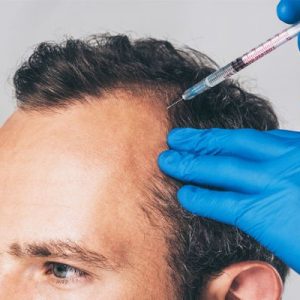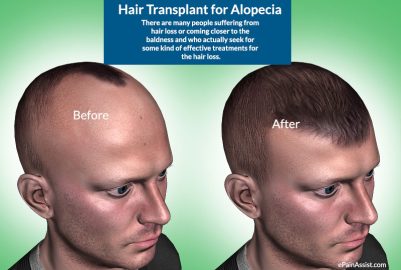Usually hair transplant surgeons or physicians will request a hair transplant post-operative follow-up appointment the day after the surgery to assess the affected areas and provide ample information on how to care for the grafts during the healing period. They may also want to schedule a few more follow-up appointments in the coming months to ascertain that the grafts are healing correctly. The following are important hair transplant tips to aid in, and ease the process of, post hair-transplant recovery.
What is a hair transplant?
A hair transplant is a procedure in which a plastic or dermatological surgeon moves hair to a bald area of the head. The surgeon usually moves hair from the back or side of the head to the front or top of the head.
Hair transplants typically occur in a medical office under local anesthesia.
Pattern baldness is responsible for the majority of hair loss. This comes down to genetics. The remaining cases are due to a variety of factors, including:
diet
stress
illness
hormonal imbalance
medications
Are there different types of hair transplants?
There are two types of transplant procedures: slit grafts and micrografts.
Slit grafts contain 4 to 10 hairs per graft. Micrografts contain 1 to 2 hairs per graft, depending on the amount of coverage needed.
Who might benefit from a hair transplant?
Receiving a hair transplant can improve your appearance and self-confidence. Good candidates for a hair transplant include:
men with male pattern baldness
women with thinning hair
anyone who has lost some hair from a burn or scalp injury
Hair replacement isn’t a good option for:
women with a widespread pattern of hair loss throughout the scalp
people who don’t have enough “donor” hair sites from which to remove hair for transplant
people who form keloid scars (thick, fibrous scars) after injury or surgery
people whose hair loss is due to medication such as chemotherapy
What happens during a hair transplant?
After thoroughly cleaning your scalp, a surgeon uses a small needle to numb an area of your head with local anesthesia.
Two main techniques are used to obtain follicles for transplantation: FUT and FUE.
In follicular unit transplantation (FUT):
The surgeon will use a scalpel to cut out a strip of scalp skin from the back of the head. The incision is typically several inches long.
This is then closed with stitches.
The surgeon next separates the removed portion of scalp into small sections using a magnifying lens and sharp surgical knife. When implanted, these sections will help achieve natural-looking hair growth.
In follicular unit extraction (FUE) the hair follicles are cut out directly from the back of the head through hundreds to thousands of tiny punch incisions.
The surgeon makes tiny holes with a blade or needle in the area of your scalp that’s receiving the hair transplant. They gently place hairs in these holes.
During one treatment session, a surgeon may transplant hundreds or even thousands of hairs.
After, the graft, gauze, or bandages will cover your scalp for a few days.
A hair transplant session can take four hours or more. Your stitches will be removed about 10 days after surgery.
Why hair transplant? Trichotillomania, This is a psychological condition where a person pulls out his/her hair. If excessive hair is lost resulting in bald spots, then you may opt for hair transplant surgery.
Alternatives Cosmetic enhancers: These include coloured creams, sprays, and powders that help to camouflage thinning areas, as long as there is still some hair present in the area where they are applied.They do not treat the hair loss process or prevent further hair loss.
You should be aware about what techniques are being used for hair transplantation. However, new techniques for hair transplant Follicular unit extraction(FUE) and Bio fue are used, because serious and critical situation can be easily handled with these techniques. also these techniques are scar free and pain less.
Swelling can affect the eye area, so application of cold compressions would help in reducing the swelling by decreasing the blood flow in that region by constricting the tiny blood vessels present in near the eyes. But you should be careful not to apply too much cold also as it may affect the growth of new hair follicles. Avoid any vigorous physical activity as it can increase the swelling and the healing process. It can also cause bursting of the swellings resulting in blood clots and infections.
More info regarding trasplante de cabello turquia. As Esthetic Hair Turkey we know the fact that once you start to lose your hair, it is hard to think about anything else. For this reason, we promise to our clients to provide totally natural outlook and imperceptable outcomes by using the most modern FUE(DHI) hair transplant techniques that will carry you back to looking and feeling the way you used to be-or event better! Ultimately, we will boost your morale and confidence, uplift your mood, change your appearance and renew your vigour. It is the whole package that comes with the new-looking you! Now you can shape your hair, primp or perm it and pamper yourself up! Esthetic Hair Turkey is absolutely the best decision you will make to restore your hairs! Your hair is our business!


